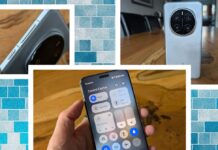Speaking on a landline, the patient complained of an itchy eye. On the call’s other end, physician Carla Harwell considered the possibilities, from seasonal allergies to vision-damaging herpes. Luckily, the elderly patient’s daughter was visiting during the phone consultation, so Harwell asked her to text a picture of her mom’s eye. The photo shocked Harwell. It was the worst case of bacterial conjunctivitis the doctor had ever seen.
Without the picture, Harwell would have told the octogenarian patient to call back in a few days or come to her office, risking an in-patient visit during the Covid-19 pandemic. She certainly wouldn’t have prescribed the antibacterial eye drops needed to treat the infection. “I probably would not have prescribed anything,” Harwell says. “That’s a scary thought.”
Amid the coronavirus pandemic, more of the nation’s medical care is being delivered by telephone or videoconference, as in-person care becomes a last resort for both doctors and patients. That’s a problem for tens of millions of Americans without smartphones or speedy home internet connections. For them, the digital divide is exacerbating preexisting disparities in access to health care.
Harwell, a primary care doctor, is based in Cleveland, where nearly one-fourth of households lack broadband. Her patients are predominantly black and older, and many are lower income with chronic conditions like hypertension, asthma, diabetes, or obesity. “All things that place them at the top of the list for dying from Covid,” Harwell says. “It also means my patient population is at the bottom of the list for access to the technology that’s needed to effectively do telemedicine.”
Harwell and other clinicians worry that patients without reliable devices or internet service are receiving inferior care—or none at all. In some cases, doctors are asking patients on the wrong side of the digital divide to come in for visits, despite the safety risks. “When you need telemedicine everywhere, you see a vulnerable population that doesn’t have the means to use it,” Harwell says. “It’s revealed these inequities and the disparities that we’ve been sweeping up under the rug.”
Patients unfamiliar with or lacking access to technology already tend not to use online tools that can improve health outcomes and allow them to request appointments and prescription refills, as well as message their doctors directly. Telemedicine was supposed to increase access to health care during a national medical emergency, says Jorge Rodriguez, a physician at Boston’s Brigham and Women’s Hospital who also studies health care technology disparities. But for some, it’s just another barrier. “It’s become a lifeline,” he says, “but not across the board.”
A New Hierarchy of Care
Since March, doctors—from infectious wound specialists to psychiatrists and pulmonologists—have reshuffled their hierarchy of care. In-person appointments, the bread and butter of medicine, are a last resort. Instead, to avoid full waiting rooms that expose both doctors and patients to the novel coronavirus, videoconferencing has become the preferred alternative. Telephone consults are the next best option, often described to me by physicians as “better than nothing.”
Overall, as many as 157.3 million people in the US only have access to substandard download speeds. During the pandemic, roughly half of low-income American say they’re concerned about affording to pay their broadband and smartphone bills, according to April Pew Research data. In rural areas (where Pew figures suggest only 63 percent of residents have home broadband subscriptions), phone calls might be patients’ best option.
Kim Templeton, an orthopedic surgeon with an oncology subspecialty in Kansas City, Kansas, routinely tries to connect with patients over videoconferencing after biopsies or reconstructive surgeries. But her rural patients often didn’t have the technology or home internet for virtual check-ins. Instead, many drove five or six hours to office visits. “It’s inconvenient, but it’s worth it,” Templeton says.
Now, she can’t ask them to travel to her. In some cases, Templeton says, she can’t even receive their x-rays, MRIs, or CAT scans from rural hospitals or doctor’s offices that don’t have the bandwidth to upload image files to the cloud. Those patients are left to describe healing incisions and lingering pain over the phone. “It can be almost impossible to figure out what’s going on,” Templeton says.








